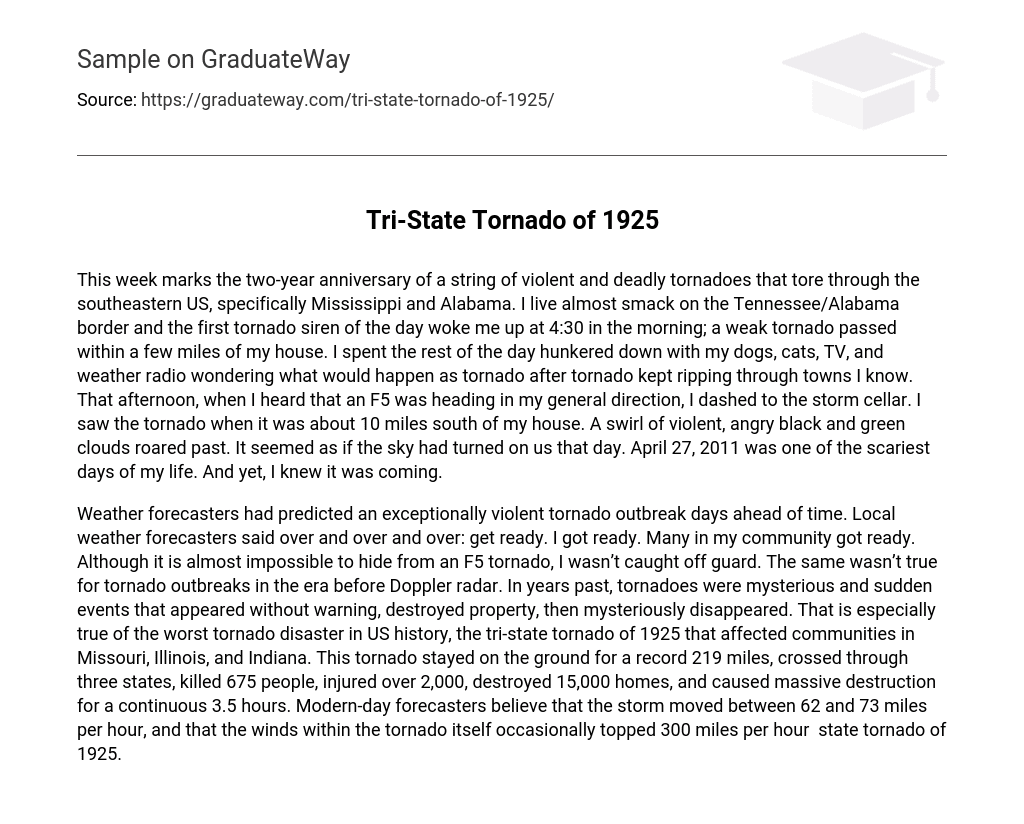This week marks the two-year anniversary of a string of violent and deadly tornadoes that tore through the southeastern US, specifically Mississippi and Alabama. I live almost smack on the Tennessee/Alabama border and the first tornado siren of the day woke me up at 4:30 in the morning; a weak tornado passed within a few miles of my house. I spent the rest of the day hunkered down with my dogs, cats, TV, and weather radio wondering what would happen as tornado after tornado kept ripping through towns I know. That afternoon, when I heard that an F5 was heading in my general direction, I dashed to the storm cellar. I saw the tornado when it was about 10 miles south of my house. A swirl of violent, angry black and green clouds roared past. It seemed as if the sky had turned on us that day. April 27, 2011 was one of the scariest days of my life. And yet, I knew it was coming.
Weather forecasters had predicted an exceptionally violent tornado outbreak days ahead of time. Local weather forecasters said over and over and over: get ready. I got ready. Many in my community got ready. Although it is almost impossible to hide from an F5 tornado, I wasn’t caught off guard. The same wasn’t true for tornado outbreaks in the era before Doppler radar. In years past, tornadoes were mysterious and sudden events that appeared without warning, destroyed property, then mysteriously disappeared. That is especially true of the worst tornado disaster in US history, the tri-state tornado of 1925 that affected communities in Missouri, Illinois, and Indiana. This tornado stayed on the ground for a record 219 miles, crossed through three states, killed 675 people, injured over 2,000, destroyed 15,000 homes, and caused massive destruction for a continuous 3.5 hours. Modern-day forecasters believe that the storm moved between 62 and 73 miles per hour, and that the winds within the tornado itself occasionally topped 300 miles per hour state tornado of 1925.





